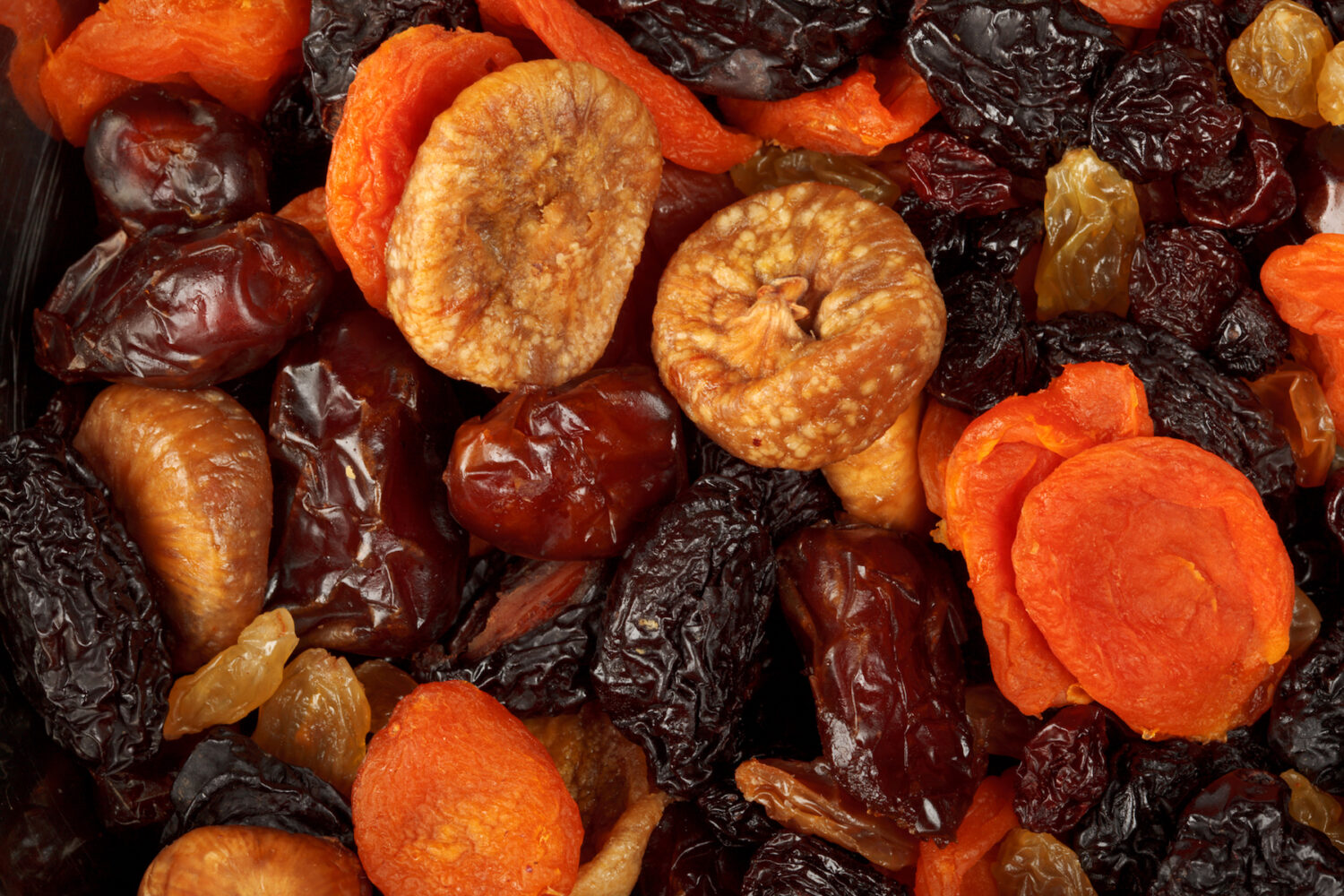
Using Dried Fruits for Cooking
In the 1800s, most fruits were only eaten while in season unless they were canned or dried. Fresh bananas and oranges were often shipped long distances, but not other fruits. 1800s cookbooks never mention eating dried fruit as a snack, like we do today. Instead, dried fruit was mostly used to flavor bread or desserts.
INFORMATION BELOW COMPILED FROM 1800s COOKBOOKS
VARIETIES OF DRIED FRUITS
There are a number of fruits that are dried before they are put on the market, and they may be used when fresh fruits are out of season or as a substitute for canned fruits. The chief varieties of dried fruits are dates, figs, prunes, which are dried plums, and raisins, which are dried grapes, cherries, apples, apricots, and peaches.
TO PRESERVE VARIOUS KINDS OF FRUIT THROUGH THE WINTER
Various kinds of fruit, taken when green, such as grapes, gooseberries, currants, and plums, can be kept through the winter by being treated in the following manner: fill junk bottles with them and set them in an oven six or seven hours, after having baked in it. Let them remain till they begin to shrink, then take the fruit from one bottle to fill the others quite full. Cork and seal up the bottles.
Ripe blackberries and whortleberries, to be kept long, should be dried perfectly in the sun, then tied up in bags that are thick enough to exclude the air.
Ripe currants, dried on the stalks, then picked off and put in bags, will keep nice for pies during the winter. They also make a fine tea for persons that have a fever, particularly the hectic fever.* It is also an excellent thing to counteract the effects of opium.
*hectic fever – the name given by Niccolo Machiavelli (1469–1527) referring to sepsis (source).
TO DRY CHERRIES
Choose the finest and largest red cherries for this purpose. Stone* them and spread them on large dishes in the sun till they become quite dry, taking them in as soon as the sun is off, or if the sky becomes cloudy. Put them up in stone jars, strewing* among them some of the best brown sugar.
The common practice of drying cherries with the stones in, (to save trouble,) renders them so inconvenient to eat, that they are of little use. With the stones extracted, dried cherries will be found very good for common pies.
To dry cherries without sugar, stone, and set them over the fire in a preserving pan. Simmer them in their own liquor, and shake them in the pan. Put them by in common china dishes. Next day, give them another scald* and when cold, put them on sieves to dry in an oven moderately warm. Twice heating, an hour each time, will be sufficient. Place them in a box, with a paper between each layer.
*stone – to remove the stones of fruit, such as the seeds in raisins and plums. Raisins and plums were sold with the seeds in the 1800s.
*strew – to scatter or spread untidily over a surface or area.
*scald – to heat liquid almost to a boil, until bubbles begin to form around the edge.
DRIED APPLES
Good apples properly dried make a very palatable sauce. But unfortunately, the fruit generally selected for drying is of so inferior a quality that it would not be good if cooked in its fresh state. The dried fruit in most of our markets needs to be looked over carefully, and thoroughly washed before using. If the fruit is very poor, adding a few very thin slices of the yellow portion of lemon or orange rind a half hour before they are done cooking, will sometimes be an improvement.
DRIED APPLES WITH OTHER DRIED FRUIT
An excellent sauce may be made by cooking a few dried plums with dried or evaporated apples. Only enough of the plums to give a flavor to the apples will be needed; a handful of the former to a pound of apples will be sufficient. Dried cherries, raisins, English currants, apricots, plums, and peaches are also excellent used in combination with dried apples.
DRIED PEARS
These may be treated in the same way as dried apples.
DATES
Dates, which are the fruit of the date palm, are not only very nutritious but well-liked by most persons. As dates contain very little water and a great deal of sugar, their food value is high, being more than five times that of apples and oranges. They are also valuable in the diet because of their slightly laxative effect. When added to other food, such as cakes, hot breads, etc., they provide a great deal of nutriment.
The finest dates on the market come from Turkey and the Eastern countries. To be most satisfactory, dates should first be washed in hot water and then have cold water run over them. If they are to be stuffed, they should be thoroughly dried between towels or placed in a single layer on pans to allow the water to evaporate. While the washing of dates undoubtedly causes the loss of a small amount of food material, it is, nevertheless, a wise procedure.
FIGS
Figs are a small pear-shaped fruit grown extensively in Eastern countries and to some extent in the western part of the United States. The varieties grown in this country are not especially valuable when they are dried, but they can be canned fresh in the localities where they are grown. Dried figs are nearly as high in food value as dates, and they are even more laxative.
Dried figs are found on the market both as pressed and pulled figs. Pressed figs are those which are pressed tightly together when they are packed and are so crushed down in at least one place that they are more or less sugary from the juice of the fig. Pulled figs are those which are dried without being pressed and are suitable for such purposes as stewing and steaming.
PRUNES
Prunes are the dried fruit of any one of several varieties of plum trees and are raised mostly in Southern Europe and California. They are priced and purchased according to size, being graded with a certain number to the pound. In food value, they are about equal to dates and figs. They contain very little acid but are characterized by a large quantity of easily digested sugar. They also have a laxative quality that makes them valuable in the diet.
TO DRY PLUMS INTO PRUNES
Take the largest and finest purple plums, (oval or long-shaped if you can get them.) They must be quite ripe. Spread them separately on flat dishes and set them in a large oven, directly after the bread, pies, &c., have been taken out. Let the plums stay in till the oven is cool, taking them out and turning them over two or three times. If you bake every day, put in the plums as before till they are sufficiently dry.
Otherwise, set the dishes in a balcony, on the roof of an out-house, or a place where they will be exposed to the hot sun. It will be well to cover them with thin gauze to keep off wasps, flies, &c. Continue to set them every day in the sun till they are well dried, and look like prunes. Then pack them down in jars or boxes; laying orange or lemon-leaves among them.
RAISINS
Raisins are the dried fruit of various kinds of grapes that contain considerable sugar and are cured in the sun or in an oven. They come principally from the Mediterranean region and from California. They have an extensive use in cookery, both as a confection and an ingredient in cakes, puddings, and pastry. In food value, raisins are very high and contain sugar in the form of glucose. However, their skins are coarse cellulose and for this reason are likely to be injurious to children if taken in too large quantities. They are also valuable as a laxative and in adding variety to the diet if they are well cooked before they are served.
Like other dried fruits, raisins should be washed thoroughly before they are used. They may then be soaked in warm water and stewed. Sugar may or may not be added, as desired. Sultana raisins, which are the seedless variety, are especially desirable for stewing, although they may be used for any of the other purposes for which raisins are used.
DRIED APRICOTS AND PEACHES
Apricots and peaches are fruits that are used extensively in their dried form. They enable the housewife to supply her family with fruit during seasons when it is impossible to obtain fresh fruit. They may also be used to take the place of canned fruit. Besides their use as a sauce, they may be used for pies and various desserts.
These fruits should be soaked before stewing, then sufficient sugar to make them sweet should be added. If they are desired for sauce, they may be used without any further preparation. However, they may be substituted for fresh fruit in recipes that call for any of them or for prunes.
Dried apricots and peaches, if dried with the skins on, need a thorough rubbing with the fingers while being washed, to remove the down.
Image from Deposit Photos
=================================================
What Are Your Favorite Dried Fruits? Please Leave a Comment Below.
=================================================

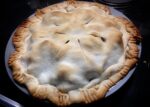
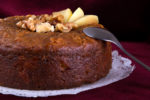
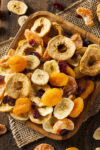
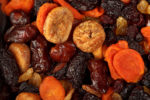
2 thoughts on “Using Dried Fruits for Cooking”
I love dried fruits, and try to make a fruitcake every year for Christmas. They are healthy, and I think they are underrated for flavor.
I like dried fruits as long as they don’t have added sugar. I think they’re all sweet enough as they are. I like fruitcake, too, as long as it doesn’t have that candied dried mixture you can buy in the store that people used to use a lot.